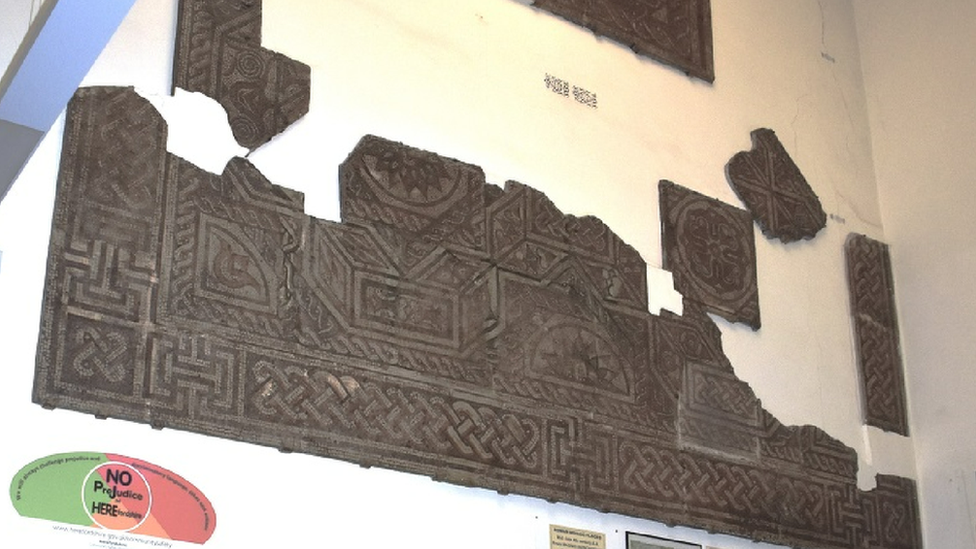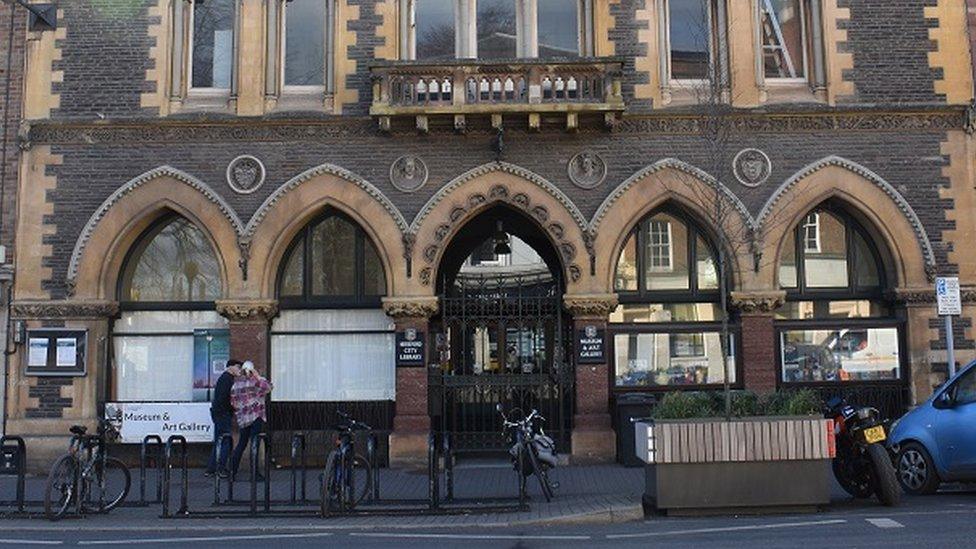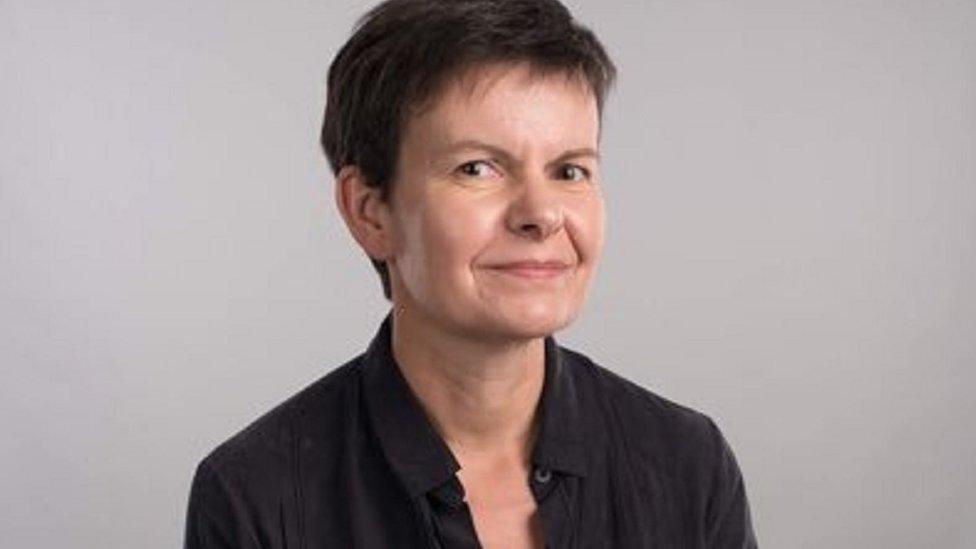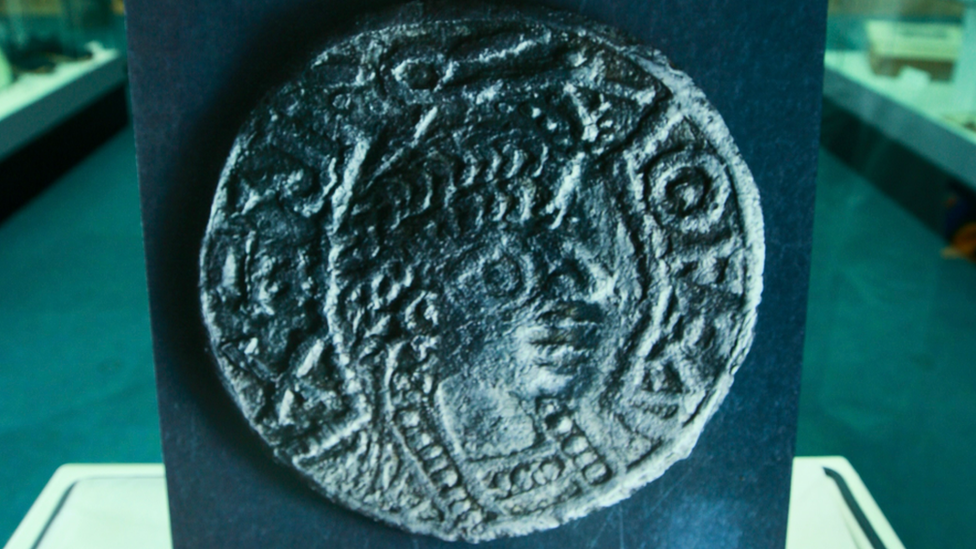Mosaics on the move after 100 years at Hereford museum
- Published

The mosaics have been on display at the museum for 100 years
Roman mosaics that have been on display at Hereford's museum and art gallery for 100 years are to be moved, to allow redevelopment work to take place.
They were originally laid on the floor in a wealthy Roman era home at Kenchester in Herefordshire.
A specialist building conservation and restoration company has been brought in to carry out the work.
On 16 and 17 August, visitors to the museum will get at last chance see the mosaics before they moved.
The mosaics, which include intricate spiral, interlocking border and flower patterns, have been displayed on a wall at the museum, on Broad Street.
Herefordshire Council archaeologists believe they were created between 350 and 380 AD at a Roman town known as Magna or Magnis.
The town was created at a point at which two roads met and it was occupied into the 5th Century.
Finds at Kenchester suggest there was probably a fort there and a bath house too.
The site was first excavated in 1912-13, when the mosaics were found.
The council said it was a "high quality piece" which would have once measured 25 sq ft (2.3m sq) and is similar in style to mosaics found in Gloucester, Droitwich and Cirencester.
The mosaics are among the final objects to move before the museum is redeveloped and extended.
Work on the building is expected to be completed in 2025.

Follow BBC West Midlands on Facebook, external, Twitter, external and Instagram, external. Send your story ideas to: newsonline.westmidlands@bbc.co.uk, external
Related topics
- Published19 July 2023

- Published18 July 2023

- Published18 May 2023

- Published2 March 2023
